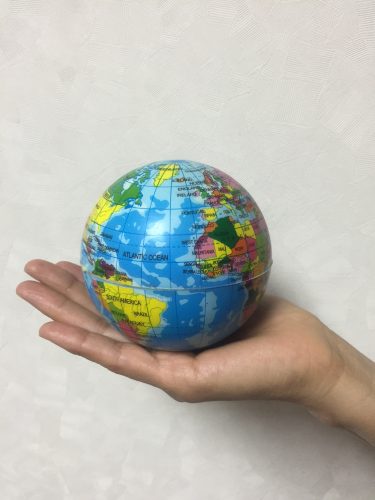Easy Ways to Save the Planet from Home

Happy Earth Day!
Our planet is rapidly changing and not for the better. It can be overwhelming to think about how one person can make a difference, but it’s possible. Think about it. At least 30% of our food supply is wasted! Most food waste occurs in the home, and fruits and vegetables are the most wasted foods.
Unwelcome Reality
When you throw away food, it not only wastes hard-earned money, the food ends up in landfills. The result is the release of methane gas. This increases greenhouse emissions and contributes to global warming. Eliminating food waste has the potential of saving precious water supplies; decreasing food prices from labor costs; and reducing the amounts of fertilizer and pesticides used on crops. Individuals can help the planet by making small changes at home.
Here are some easy tips that anyone can do to reduce food waste and save our planet for future generations.
Buy Proper Amounts
Sure. It’s a great idea to fill up the refrigerator with fresh fruits and vegetables from the farmer’s market. But be realistic. How much are you going to eat before it rots? It takes planning and experience to know how much to buy. The freezer is your friend and comes in handy for many fruits and vegetables. Check out the FDA’s online food storage chart or the USDA’s Food Keeper app for useful tips. https://www.fda.gov/media/101389/download
Organize the Refrigerator
How many times have you found an unknown substance in the refrigerator, because it kept getting pushed to the back and forgotten. There’s a tried and true method called First In-First Out. This is true for the refrigerator as well as the pantry. Label leftovers with a date and place them in the front of the refrigerator for quick assess.
Eat Leftovers
Having leftovers for dinner is a big timesaver. All you have to do is reheat and add a prepared salad. It is easier and a lot less expensive than deciding at the last minute to pick up take-out, leaving the leftovers to go bad. Planning dinners and cooking in bulk saves money and reduces food waste – as long as you eat them.
From Tops to Bottom
Are you throwing away good nutrition and not even knowing it? Did you know that you can eat the tops off of carrots? Try making a carrot top pesto or adding carrot tops to soup. Did you know that you can eat broccoli stalks and the leaves? Celery leaves? Do you eat beets and throw away the greens? Our food choices are generally based on habit. Things will stay the same until you change. By trying new ideas, you might find some new favorite foods. Who would have thought that shredded raw Brussels Sprouts would be good in salads? Are you willing to try pickled watermelon rinds?
- Keep fresh basil in a container of water and cut as needed
- Peel and freeze ripe bananas for future smoothies
- Toast acorn and butternut seeds the same as pumpkin
- Excess grapes are delicious frozen, along with other fruits
- Ginger does not have to be peeled. Chop or grate and use as a flavoring in vegetables or a stir-fry or for tea
- Grate or cut citrus rinds into strips; use the zest in salads
- Beets, potatoes and carrots do not need to be peeled
- Kiwis do not have to be peeled. The fuzzy part is edible.
The Future
The first step is awareness. Now you know there is a problem. Set a goal and be part of the solution by taking action. Everyone needs to be willing to make small tweaks. It’s not just about eating plants to be healthy, it’s also about eating more of the plants to reduce waste. Start today and be part of the movement to slash greenhouse gas emissions. Our future may depend of every household member taking responsibility. It’s not only a nice thing to do. It may be a necessity. Are you willing to make a difference? What can you do?
